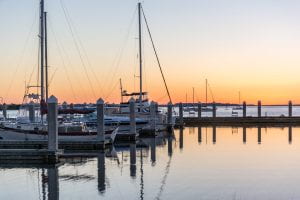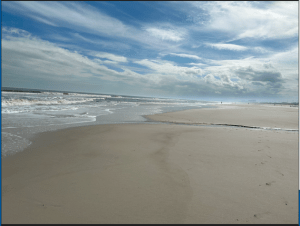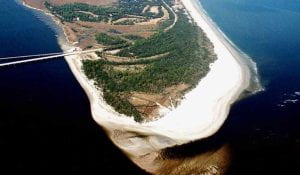(Click on the following link to listen to an audio version of this blog … Dietary nuts and seeds
Including nuts as a part of a healthy diet is an idea strongly supported by nutrition scientists. In 2003 the “Food and Agricultural Organization” of the “World Health Organization” noted that there was a “probable association between unsalted nuts and a decreased risk of cardiovascular disease.” In 2012 the “Nordic Nutrition Recommendation” explicitly recommended the consumption of nuts and seeds as a nutritional safeguard for better health. For many years, seeds and nuts have been recognized as an excellent source of protein and unsaturated fatty acids, but more recent studies have stressed that their high levels of polyunsaturated fatty acids, vitamin E’s, minerals, dietary fiber, polyphenols, flavonoids and phytosterols may be possible counter-agents to the rampant cardiovascular diseases afflicting people in almost every society.
From these recommendations, the “Healthy Nordic Diet” and the “Dietary Approaches to Stop Hypertension” were developed. There have also been a large number of self-defined “Mediterranean Diets” and a wide range of “Plant-Based/Vegan” diet plans that have all included anywhere from three servings of nuts and seeds per week to two or three servings of nuts and seeds a day as a part of their dietary strategies. In general, most nutritionists agree that having at least 30 grams of unsalted nuts a day (20 almonds or 15 cashews) can have significant effects on a person’s health.
It is not surprising that with this increased dietary emphasis on eating seeds and nuts, the worldwide production and consumption of these products has substantially increased. The global production of nuts was 3 million metric tons in 2008/2009 but this value almost doubled (to 5.3 million metric tons) by 2022/2023! More and more nut farms are being established to satisfy the growing demand for dietary nuts. More and more land and other resources are being dedicated to the growing of these products.
A ”nut,” by the way can be defined in two ways. Botanically, a nut is the fruit of a tree that has a hard, tough shell encasing and protecting the edible seed. By this definition, chestnuts, hazelnuts, pecans and walnuts are true nuts. There is also, though, a culinary or dietary definition of a nut that includes the botanical nuts and also the “nuts” that are actually seeds that develop inside of fleshy fruits that grow on trees. These additional dietary nuts include cashews, Brazil nuts, almonds, pistachios and macadamia nuts. To make the term “nut” even more confusing, peanuts, which really legumes whose shelled seeds develop underground, are also classified, dietarily, as nuts!
Tree nuts (a general term for the true nuts and tree-grown dietary nuts) in order of the highest total annual production to the lowest are: almonds, walnuts, cashews, pistachios, hazelnuts, pecans, Macadamia nuts, pine nuts and Brazil nuts. Most almonds (80% of total world production (TWP)) are grown in the United States (primarily in California), most walnuts are grown in China (51% of TWP), most cashews are grown in the Ivory Coast and India (combined 43 % of TWP), the leading producer of pistachios is the United States (49 % of TWP), most Hazel nuts are grown in Turkey (70% of TWP), most pecans are grown in the United States (80 to 90% of TWP), the leading producers of macadamia nuts are South Africa (26% of TWP) and Australia (22% of TWP), the leading producers of pine nuts are China (53% of TWP) and Russia (19% TWP), and most Brazil nuts are grown relatively equally in Bolivia and Brazil (92% of TWP).
Peanuts are grown in China (37% of TWP) and India (13% of TWP) followed by Nigeria (6% of TWP) and the United States (5% of TWP). The state of Georgia is the center of peanut production in the United States a fact that was made quite famous by a Georgia peanut farmer who became president, Jimmy Carter.
Overall, China is the largest total producer of tree nuts and peanuts in the world. The amount of land dedicated to growing tree nuts, though, is a relatively small percentage of the 5 billion hectares (12.4 billion acres) of total arable land on Earth. It is estimated that only10% of Earth’s arable land is planted in permanent crops like fruit and nut trees, oil palm plantations, cocoa plantations and coffee plantations.
A recent report in the journal Food and Nutrition Research (February 14, 2023) discussed a meta-analysis of previously published studies exploring the impact of dietary nuts and seeds on human health. The authors of this paper screened 23,244 references and then selected a much more limited number for their detailed analysis. The meta-analysis was conducted on a group of “cohort studies” (42 papers comparing health variables in populations that either did or did not consume seeds and nuts (these 42 studies involved 1,890,573 participants)), and a group of “randomized control trials” (RCT’s) (18 papers in which experimental groups consumed a prescribed amount of nuts and seeds over a set time limit and health variables were then assessed (these RCT’s had a total of 2,266 participants).
The analysis indicated a probable relationship between the consumption of nuts and seeds and a decreased risk of cardiovascular disease (particularly coronary artery disease). This impact was thought to be caused by the effects of the nuts and seeds lowering (very slightly) the participants’ low density lipoprotein (“LDL”) levels. LDL is commonly referred to as the “bad cholesterol” and is statistically correlated to accelerated atherosclerosis and coronary heart disease. There were also some suggestions, but no conclusive evidence that the consumption of nuts and seeds reduce the chances of having a stroke. Consumption of nuts and seeds did not have any apparent impact on Type 2 diabetes or blood sugar, and the data concerning fasting blood sugar levels and A-1C levels were conflicting and not clear.
So, seeds and nuts seem to help control the “bad” cholesterol and reduce the impact of coronary arterial disease, but they are not universal panaceas for good health. Seeds and nuts are also, as pointed out by a number of nutritionists, very high in calories and should, then, be consumed in moderation or, at least, eaten in place of other foods rather than as a supplement to one’s regular diet.
Over the next two weeks, I will discuss the ecology of the production systems for these nuts. Next week I will describe how almonds, cashews, walnuts, pistachios and hazel nuts are grown and processed. The following week, I will discuss pecans, macadamia nuts, pine nuts, Brazil nuts and peanuts are grown and processed.


























































